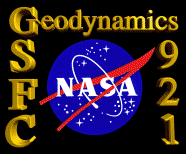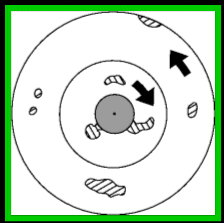


There may be a 1000 year periodic change in the Earth’s Length of Day (LOD)
In a paper accepted for publication in the Journal of Geophysical Research – Solid Earth, David Rubincam looked at whether coupling between the liquid outer core and the mantle might be responsible for the suspected 1000 year timescale. He studied the effects that might result from the gravitational attraction between density anomalies or “blobs” in the outer core and mantle. The core anomalies, which would randomly come and go like the blobs in a lava lamp (see figure below), would cause time-variability in the gravitational attraction between the outer core and mantle, in turn producing torques which could affect and change the rotation rate between the two parts of the Earth.


Like blobs in a lava lamp, density anomalies can form in the liquid outer
core and in the mantle of the Earth. Blobs in the core will change the
gravity field and cause torques on the mantle, changing the rate of rotation
of the Earth. The timescale for this change is about 1000 years, and the
magnitude of the effect about what is needed to explain what may be an
episodic change in length of day.
His analysis suggests that plausible density anomalies can produce the non-secular acceleration, at least to the right order of magnitude, and on the timescales observed. Rubincam further suggests that, since the changing rotation of the mantle introduces a torque on the rotation rate of the core, this mechanism may also account for the westward drift of the Earth’s magnetic field, which is observed and close to the rate predicted by the model. Other effects produced by the coupling, such as changing the Earth’s tilt, appear to be small by comparison with other known causes.

Contact: Dave Rubincam, GSFC, Code 921 (David.P.Rubincam@nasa.gov)
![]()
![]() Back to Geodynamics Science Highlights
Back to Geodynamics Science Highlights
Responsible NASA official: Dr. Herbert Frey